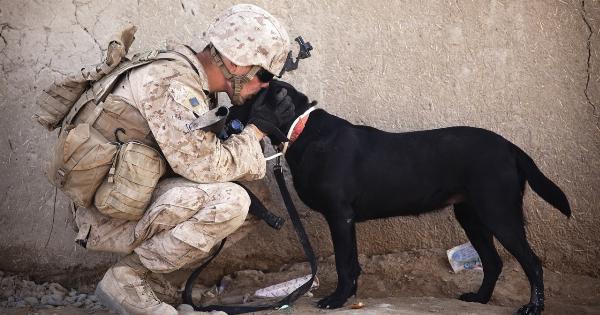Kissing dogs is a common way to show affection and love towards our furry companions. However, it is important to be aware that there are potential risks associated with this intimate act.
While dogs are generally considered to be clean animals, they can still carry certain bacteria, parasites, and viruses that may pose a threat to our health. In this article, we will discuss the risks of kissing dogs and explore ways to reduce these risks.
Risk of Zoonotic Diseases
One of the primary concerns when kissing dogs is the potential transmission of zoonotic diseases. These are diseases that can be transmitted between animals and humans.
Dogs can carry various pathogens, including bacteria, viruses, fungi, and parasites, which can cause illnesses in humans. Some of the most common zoonotic diseases transmitted through kissing dogs include:.
Risk 1: Bacterial Infections
Bacteria such as Staphylococcus aureus, Salmonella, and E. coli can be present in a dog’s mouth.
While these bacteria are often harmless to dogs, they can cause infections in humans, especially if the person has a weakened immune system. It is crucial to maintain good hygiene practices to minimize the risk of bacterial infections.
Risk 2: Parasitic Infections
Dogs can carry various parasites, including ticks, fleas, mites, and intestinal worms. These parasites can be transferred to humans through direct contact, such as kissing. Tick-borne diseases, such as Lyme disease, are of particular concern.
Regular preventive measures such as flea and tick control, as well as regular deworming, can help reduce the risk of parasitic infections.
Risk 3: Viral Infections
Some viral infections can be transmitted between dogs and humans through close contact, including kissing. One well-known example is the canine influenza virus, which can cause respiratory symptoms in both dogs and humans.
Other viruses, such as rabies or parvovirus, can also be transmitted through saliva. Vaccinating dogs against these viral infections is crucial for minimizing the risk of transmission.
How to Reduce the Risks
While there are risks associated with kissing dogs, there are also effective ways to reduce these risks and maintain a healthy bond with your beloved pet. Here are some measures you can take to minimize the potential dangers:.
1. Regular Veterinary Care
Schedule regular check-ups with your veterinarian to ensure your dog stays healthy. Vaccinations, deworming, and preventive treatments for parasites are essential to reduce the risk of infectious diseases.
2. Practice Good Hygiene
Wash your hands thoroughly with soap and water after interacting with any animals, including dogs. Avoid touching your face or mouth before washing your hands to prevent the transmission of potential pathogens.
3. Avoid Kissing Open Wounds or Broken Skin
If you have any open wounds, cuts, or skin irritations, it is advisable to avoid kissing your dog on or near those areas. Open wounds provide an entry point for bacteria, potentially leading to infections.
4. Teach Your Dog Boundaries
Train your dog to respect personal space and boundaries. This can help minimize the potential exposure to their saliva, especially around the face and mouth.
5. Regular Grooming
Regular grooming, including brushing your dog’s teeth, can contribute to their oral hygiene. This, in turn, reduces the chance of harboring harmful bacteria that could be transmitted during close contact.
6. Reinforce Basic Commands
Training your dog to respond to basic commands like “sit,” “stay,” or “off” can help when they become overly excited or exhibit behavior that could potentially lead to accidental bites.
7. Avoid Kissing Dogs with Poor Health
It is best to avoid kissing dogs that are sick or have recently been ill. Their immune systems may be compromised, making them more susceptible to infections and increasing the risk of transmission to humans.
8. Keep Children Supervised
Children are more vulnerable to certain diseases, and their immune systems may not be as robust as adults. Supervise children closely when they interact with dogs and educate them about the importance of proper hygiene and safety.
9. Maintain a Clean Living Environment
A clean living environment is crucial for reducing the risk of exposure to potential pathogens. Regularly clean your home, wash your dog’s bedding, and ensure proper waste disposal.
10. Consult a Healthcare Professional
If you have any concerns about your health or potential exposure to zoonotic diseases, it is essential to consult a healthcare professional. They can provide advice, perform necessary tests, and offer appropriate treatment if needed.
Conclusion
While kissing dogs can be a way to express affection, it is important to be aware of the potential risks involved.
By understanding the risks of zoonotic diseases and implementing appropriate preventive measures, you can reduce the chances of transmission and protect your health while still cherishing the special bond with your furry companion.































